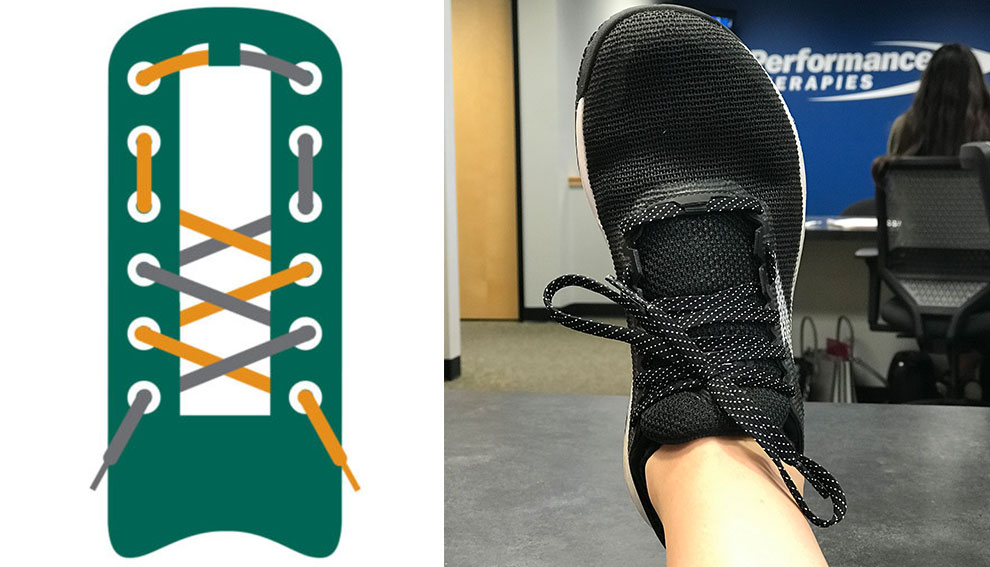If your feet hurt, you’re probably tying your shoes wrong. Give these lacing techniques a try.
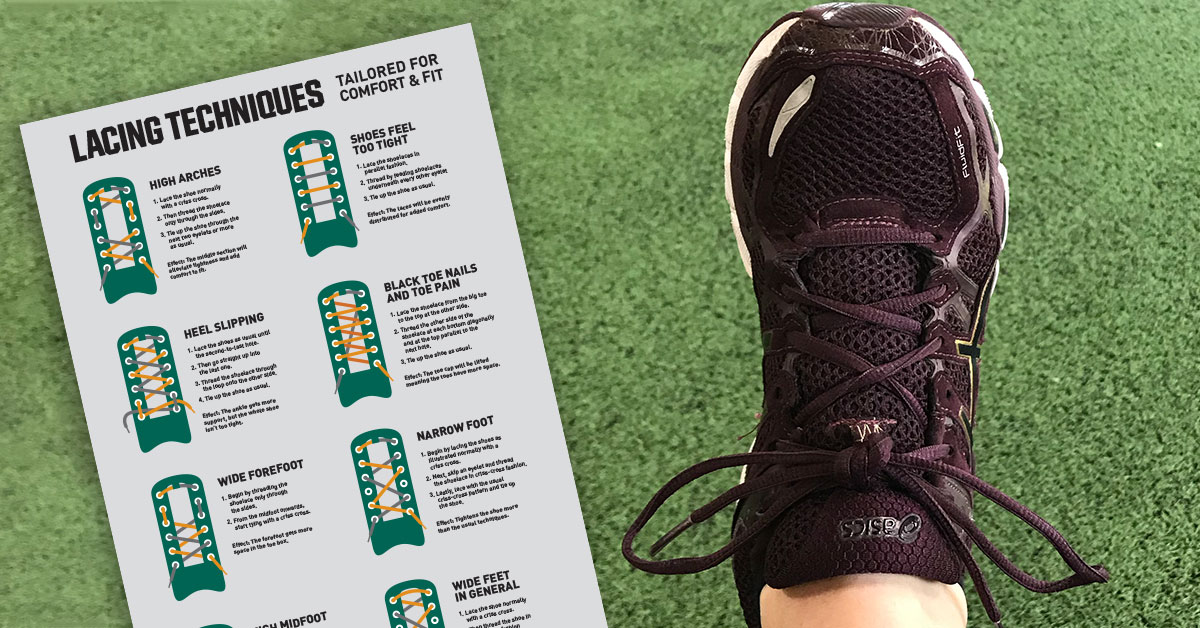
When purchasing new walking or running shoes, there are a variety of factors to consider: foot type, type of activity, mileage, and environment.
Most shoes come pre-laced but did you know there are different lacing techniques that could make your shoes more comfortable and customizable to your feet?
Below are common shoe or foot problems and lacing techniques that target those issues. Here at the clinic, we often refer to the description below written by Dick’s Sporting Goods. They also have a handy lacing techniques printable flyer which you can download here >>
ISSUE: HIGH ARCHES
High-arch lacing can help alleviate tightness and add comfort to your shoe’s fit by opening up the middle of the lace pattern.
Steps:
- Lace the shoe with a crisscross through the first set of eyelets.
- Thread the shoelace only through the sides.
- Tie up the shoe through the next two eyelets or more as usual.
Effect: The middle section will alleviate tightness and add comfort to fit.
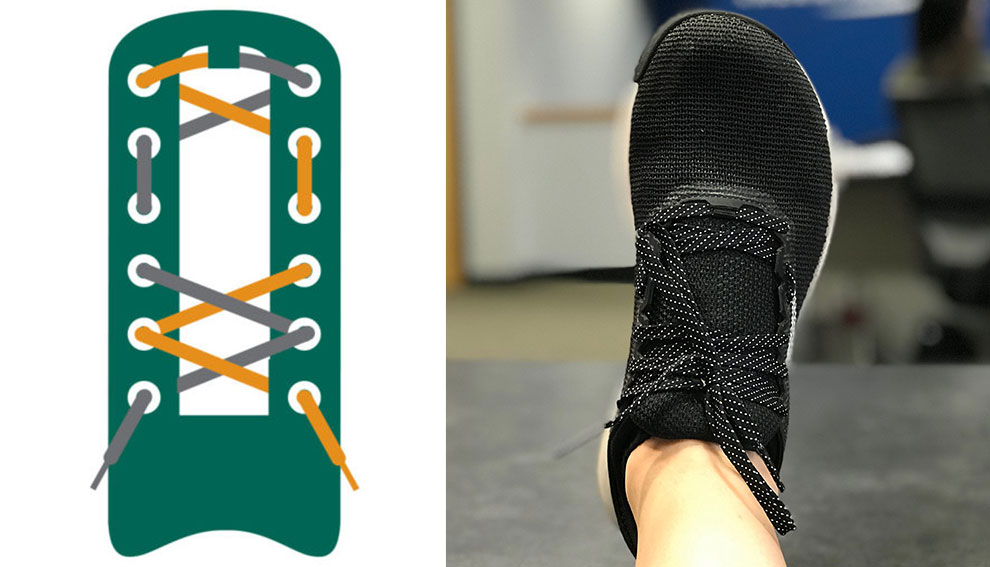
ISSUE: NARROW FEET
Skipping an eyelet and using crisscross lacing can make your running shoes tighter.
Steps:
- Begin by lacing the shoes with a crisscross.
- Skip an eyelet and thread the shoelaces in crisscross fashion.
- Lace with the usual crisscross pattern and tie up the shoe.
Effect: Tightens the shoe more than the usual techniques.
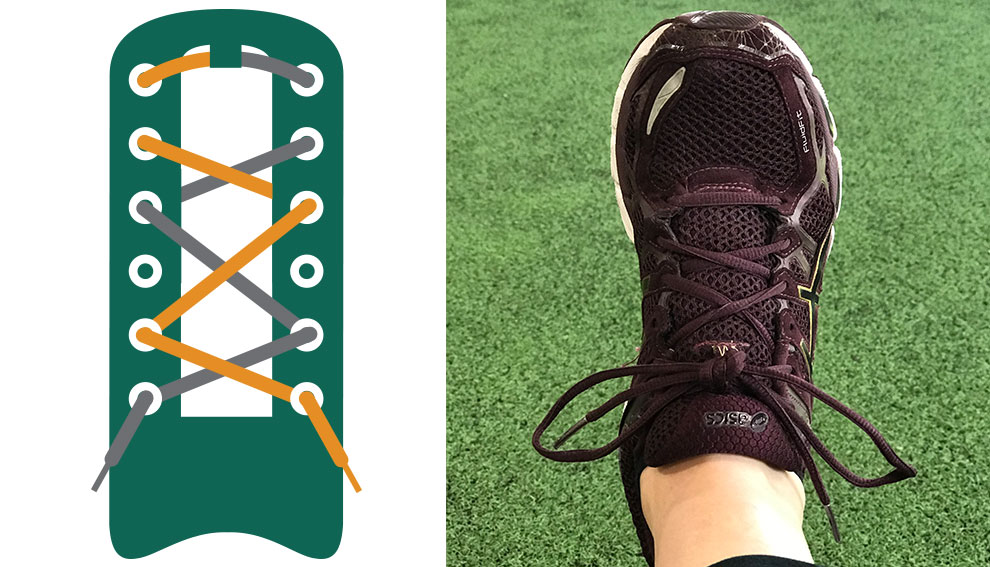
ISSUE: SHOES FEEL TOO TIGHT
Do your running shoes feel too tight? This method evenly distributes the laces for less pressure and added comfort.
Steps:
- Lace the shoelaces in parallel fashion without the standard crisscross.
- Thread by feeding the shoelaces underneath every other eyelet.
- Tie up the shoe as usual.
Effect: The laces will be evenly distributed for added comfort.
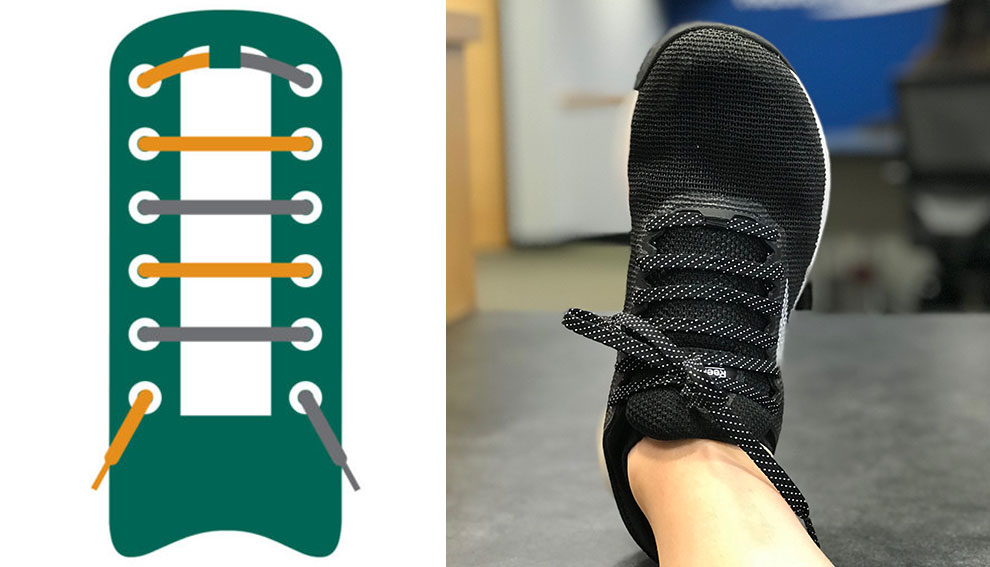
ISSUE: HIGH MIDFOOT
By skipping one or two laces, you can create more space for the midfoot.
Steps:
- Lace the shoe with a crisscross.
- Thread the shoelace only through the sides around the midfoot.
- After the point of discomfort, start tying with a crisscross again.
Effect: The pressure is minimized at the side.
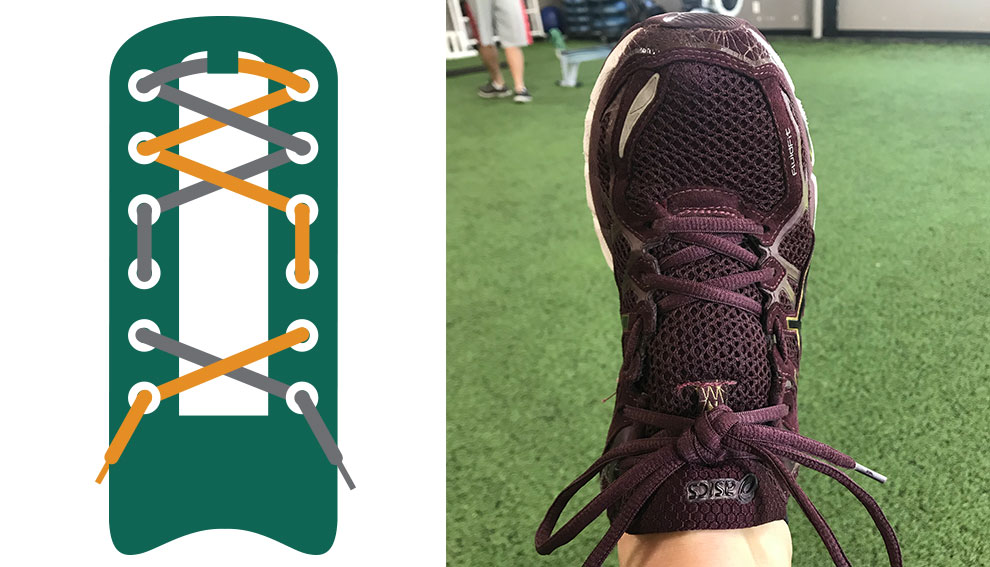
ISSUE: HEEL SLIPPING
This lacing technique can help provide greater support to the ankle and make sure your shoe isn’t too tight.
Steps:
- Lace the shoes as usual until the second-to-last hole.
- Go straight up into the final hole without crisscrossing the laces.
- Thread the shoelace through the loop onto the other side.
- Tie the shoe up as usual.
Effect: The ankle gets more support, but the whole shoe isn’t too tight.

ISSUE: WIDE FEET IN GENERAL
This style of lacing can help loosen the entire shoe to give your foot more space and comfort.
Steps:
- Lace the shoe with a crisscross.
- Thread the shoe in crisscross fashion every other eyelet.
- Tie up the shoe as usual.
Effect: Loosens the entire shoe and gives the foot more space.
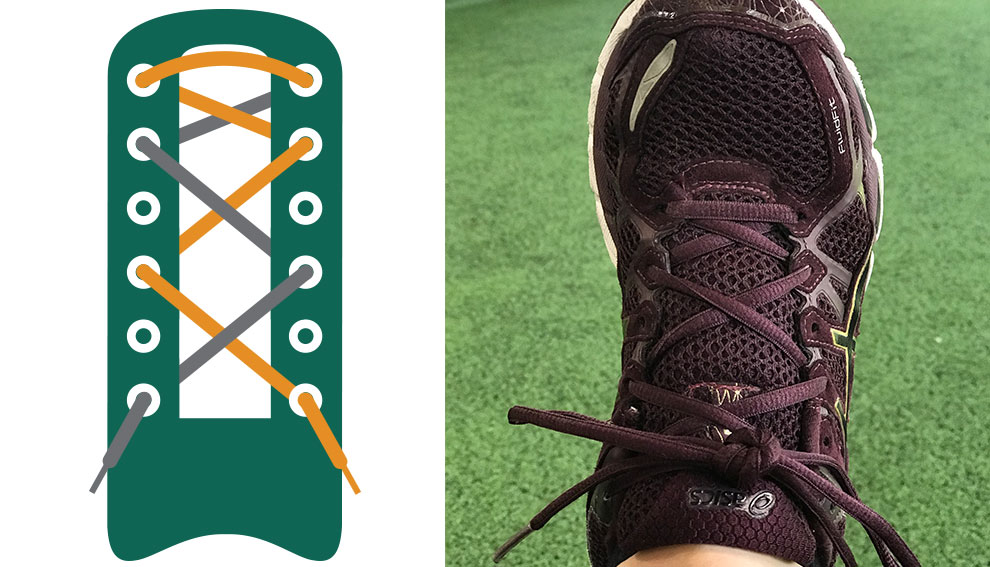
ISSUE: BLACK TOE NAILS AND TOE PAIN
This pattern of lacing can help lift the toe cap of your running shoe to give your toes more space.
Steps:
- Lace the shoelace from the big toe to the top eyelet on the opposite side.
- Thread the other side of the shoelace at each bottom diagonally and at the top parallel to each hole.
- Tie up the shoe as usual.
Effect: The toe cap will be lifted meaning the toes have more space. NOTE: this one can be tricky to setup. The lace is not evenly centered when you start, and you don’t know if you’ve pulled it too far to one wide or the other until it’s fully laced.
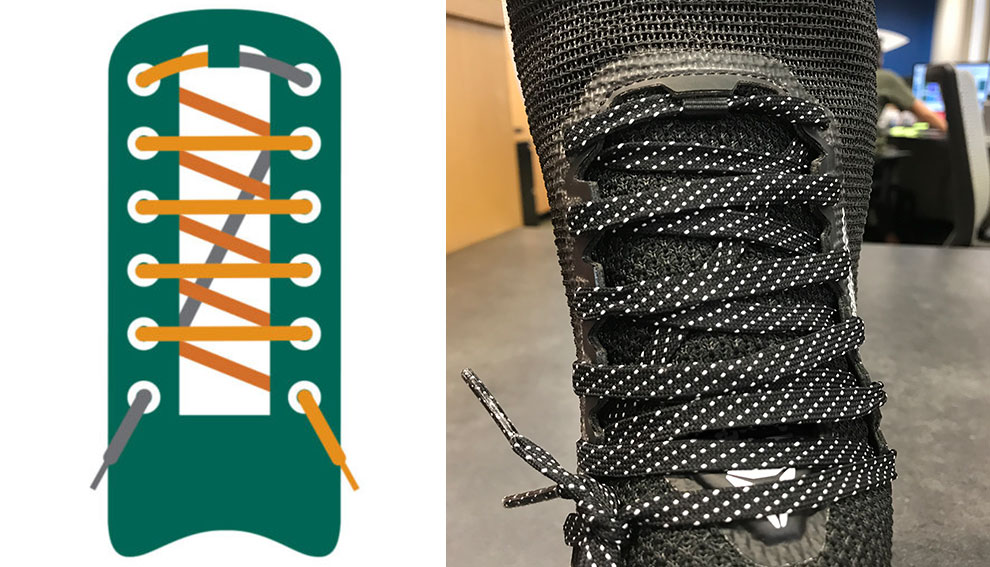
ISSUE: WIDE FOREFOOT
Wide forefoot lacing can allow for more space for the forefoot and in the toe box of your running shoe.
Steps:
- Begin by threading the shoelace only through the sides.
- From the midfoot upwards, start tying with a crisscross.
- Tie up the shoe as usual.
Effect: The forefoot gets more space in the toe box.
It might sound trivial, but you can immediately feel a difference when you try these various lacing techniques. Give them a try and let us know if they solve your own personal foot pain issues.
Not sure what method works best for you? Stop by the clinic and I’d be happy to talk with you about foot pain and lacing techniques (I’ll even tie your shoes for you!).
– ASHLEY CHIZEK
Doctor of Physical Therapy, Certified Athletic Trainer
